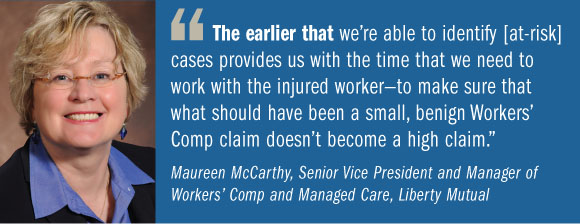Controlling Workers' Compensation costs is a process that needs to start at the very top: Those in the C-suite need to commit themselves to creating a zero-injury culture at their organizations, says Calvin Beyer, head of manufacturing for Zurich North America Commercial's customer industry segments.
Establishing such an environ-ment—one that focuses on injury prevention and puts a serious, high-level emphasis on not just reducing but eliminating accidents altogether—is a proven approach to keeping claims to a minimum, Beyer adds.
 Top managers must make sure that plant managers, safety directors, line supervisors and everyone down the line knows they are part of a bigger injury-prevention mechanism.
Top managers must make sure that plant managers, safety directors, line supervisors and everyone down the line knows they are part of a bigger injury-prevention mechanism.
Recommended For You
Want to continue reading?
Become a Free PropertyCasualty360 Digital Reader
Your access to unlimited PropertyCasualty360 content isn’t changing.
Once you are an ALM digital member, you’ll receive:
- Breaking insurance news and analysis, on-site and via our newsletters and custom alerts
- Weekly Insurance Speak podcast featuring exclusive interviews with industry leaders
- Educational webcasts, white papers, and ebooks from industry thought leaders
- Critical converage of the employee benefits and financial advisory markets on our other ALM sites, BenefitsPRO and ThinkAdvisor
Already have an account? Sign In Now
© 2025 ALM Global, LLC, All Rights Reserved. Request academic re-use from www.copyright.com. All other uses, submit a request to [email protected]. For more information visit Asset & Logo Licensing.








